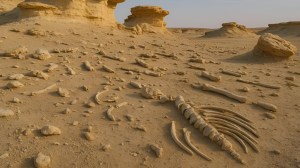A great ambassador for science: Jayant Narlikar’s efforts to popularise science in India
Throughout his life, Narlikar gave lectures and interacted with a very broad spectrum of people to popularise science. He was touched when villagers in Pune thought of him as a modern-day Sant Dnyaneshwar.
 Professor Jayant Narlikar (first left) met Lal Bahadur Shastri (second left) during the Bharat Darshan in early 1965 / Credit: Jayant V Narlikar blogs, Musings
Professor Jayant Narlikar (first left) met Lal Bahadur Shastri (second left) during the Bharat Darshan in early 1965 / Credit: Jayant V Narlikar blogs, Musings Jayant V Narlikar did more than perhaps any other scientist to take science to the masses. He acted out of a deep conviction of its necessity, and of a lifetime of seeing the benefits of a scientific education and temper. Here are two examples.
Lectures series: from England to India
The lectures that Jayant V Narlikar attended at the Royal Institution (RI) during his time as an undergraduate student at Cambridge University had a powerful impact on the young researcher.
He particularly recalled attending Nobel laureate Sir Lawrence Bragg’s RI lecture on the importance of science popularisation and the various programs by RI to bring science to the masses.
Narlikar’s mentor and PhD guide, Fred Hoyle, had a great influence on his outlook towards science popularisation. Subsequently, Narlikar would use every opportunity that came his way to tell science stories in a manner that both children and grown-ups would like.
His narrations in Marathi and Hindi found as many takers as those in English. His science popularisation efforts also made him popular, Narlikar recalled in one of his blogs.
 Professor Jayant Narlikar during one of the lectures as part of the Bharat Darshan in 1965 / Credit: Jayant V Narlikar blogs, Musings
Professor Jayant Narlikar during one of the lectures as part of the Bharat Darshan in 1965 / Credit: Jayant V Narlikar blogs, Musings
Following the publication of the Hoyle-Narlikar theory in the early 1960s, Discovery magazine reached out to Narlikar, then a research student, for a popular science article.
Narlikar was initially hesitant, but Hoyle encouraged him. The article, titled ‘Gravitational Collapse’, was well received, and there were follow-up questions, new ideas, and mounting demand for copies of the article.
On June 18, 1964, Hoyle and Narlikar got an opportunity to present their theory at the Proceedings of the Royal Society, a memorable day in his life, as Narlikar would recall later.
That presentation fuelled more interest in the press and among the public about their work, which was compared with the work of Issac Newton and Albert Einstein.
All this, Narlikar said, caught the attention of Indian diplomats, who urged him to plan a series of lectures in India. Narlikar was open to the idea of giving lectures in universities, colleges and research institutions, but he remained unimpressed by “publicity”.
Bharat Darshan: taking science to the masses
To popularise science in the country, Narlikar took part in a “Bharat Darshan” tour in February-March 1965. The tour, organised by the Indian Council of Cultural Relations (ICCR), covered Delhi, Ahmedabad, Bombay, Hyderabad, Bangalore, Madras, Calcutta, Banaras and Agra.
The tour was a great success, and Narlikar met with President S Radhakrishnan, Prime Minister Lal Bahadur Shastri, and Education Minister M C Chagla.
After the Bharat Darshan tour concluded, Narlikar went on a private visit to Pune, during which he visited the famous Singhagad fort accompanied by the Pune District Collector and local dignitaries. By then, Narlikar’s popularity had grown so much that local villagers requested that his car be briefly stopped so that they could catch a glimpse of the brilliant scholar, whom they described as a modern-day Sant Dnyaneshwar.
Narlikar recounted that he was touched and humbled by these sentiments, a true appreciation of his idea of taking science to people.
In Pune, the attendance for the ‘Ask a Scientist’ segment organised at 2 pm on every annual National Science Day (NSD) drew a full house at the Chandrashekhar auditorium of the Inter University Centre for Astronomy and Astrophysics (IUCAA).
Narlikar was a star, with students and parents patiently waiting to get a photo clicked with him. Even during the Covid-19 pandemic, when the Science Day celebrations went online, Jayant Narlikar and his wife Mangala continued to be part of the celebrations. Mangala read out the questions, and Jayant engaged online with students for about an hour.
IUCAA’s science popularisation today has borne fruit from the seed that Narlikar had sown three decades ago.
- 01
- 02
- 03
- 04
- 05






































